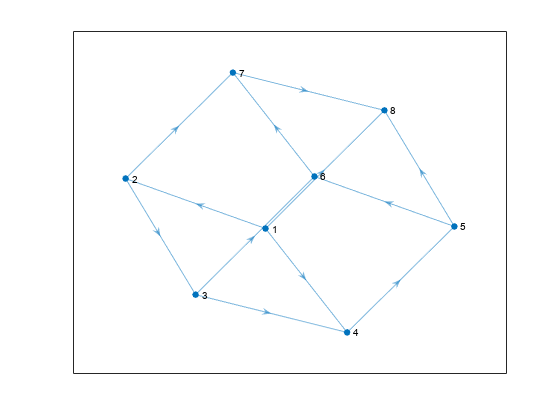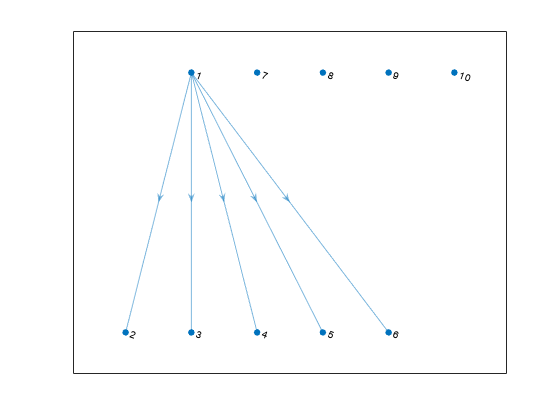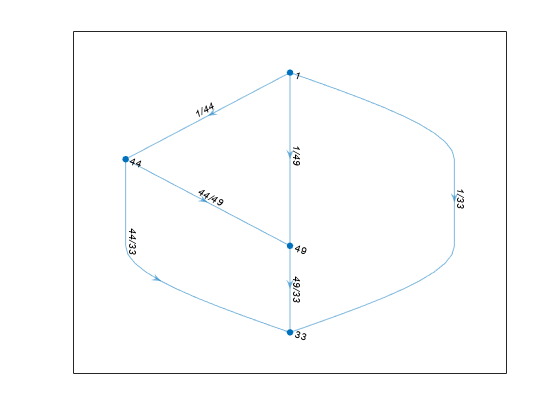digraph
具备有向边的图
说明
digraph 对象表示有向图,有向图具有连接相应节点的有向边。创建 digraph 对象后,您可以通过使用对象函数针对对象执行查询,了解有关图的详细信息。例如,您可以添加或删除节点或边、确定两个节点之间的最短路径,或定位特定的节点或边。
G = digraph([1 1], [2 3]) e = G.Edges G = addedge(G,2,3) G = addnode(G,4) plot(G)
创建对象
语法
描述
G = digraphG,该对象没有节点或边。
G = digraph(A)A 创建一个有向图。
对于逻辑邻接矩阵,图没有边权重。
对于非逻辑邻接矩阵,图有边权重。
A中的每个非零项的位置指定图的一条边,边的权重等于该项的值。例如,如果A(2,1) = 10,则G包含一条从节点 2 到节点 1 的边,该边的权重为 10。
G = digraph(s,t)(s,t) 来表示源节点和目标节点。s 和 t 可以指定节点索引或节点名称。digraph 首先按源节点、然后按目标节点对 G 中的边进行排序。如果您的边属性的顺序与 s 和 t 的顺序相同,请使用语法 G = digraph(s,t,EdgeTable) 传入边属性,以便它们在生成的图中以相同的方式排序。
G = digraph(s,t,___,'omitselfloops')s(k) == t(k) 的任何 k。您可以使用上述语法中的任何输入参量组合。
G = digraph(EdgeTable,___,'omitselfloops')EdgeTable.EndNodes(k,1) == EdgeTable.EndNodes(k,2) 的任何 k。必须指定 EdgeTable,可以选择指定 NodeTable。



